Arona Italy – Italia
- Maria Scuor
- Aug 12
- 13 min read
Italiano sotto ogni sezione
Arona is an Italian comune (municipality) on Lago (Lake) Maggiore in the province of Novara and the region of Piedmont. It has a population of about 13,650 which makes it the sixth largest municipality in Novara by population. Dagnente, Mercurago and Montrigiasco are the three hamlets belonging within the municipality of Arona.
Arona was part of the Roman consular road system which connected Mediolanum (Milan) with Verbannus Lacus (Lake Maggiore) and then to the Sempione (Simplon) Pass (Alpine pass connecting Italy and Switzerland). Documentation dating back to 979 shows the existence of a socially organized locality called Arona, but historians maintain that it dates back to 963.
The presence of inhabitants however, has been confirmed to much further back in time. In 1860, archaeological findings of prehistoric a pile-dwelling (stilt houses) were found near the hamlet of Mercurago. This settlement dates back to the Bronze Age and was active from the 18th to 13th century BC. The pile-dwellings became a UNESCO World Heritage Sites since 2011. In 1971, a necropolis of the Golasecca civilisation from the 6th to 5th century BC was discovered and the Celtic-Gauls appeared in 2nd century BC and organized their residence at the Rocca di Arona.
By 979, Emperor Otto I, had the remains of Saints Gratian and Felino transferred to the Benedictine abbey in Arona. But, like all towns in Italy, Arona was ruled by many. Including the lords of the Della Torre family and Visconti family between the 12th and 14th century. Under the Visconti family, the town was transformed into a fortified stronghold, with a castle and the territory was granted as a fief to the Borromeo Family who at this time were nobility of Milano (Milan) that had a stronghold on towns on Lago Maggiore.
In early 14th century the town became a free municipality under the abbey but in 1439 it was purchased by Vitaliano Borromeo. On what is now called La Rocca di Arona, was the Arona Castle which the Borromeo family held for four centuries. In 1538, Carlo Borromeo, a significant figure in Catholic history, known for his role in the Counter-Reformation and his work as Archbishop of Milan, was born in the Castle. The large statue “Colossus of San Carlo” was completed in 1698 and thankfully not destroyed. I haven’t gone to see it yet therefore will do a blog on it when I do go see it.
In medieval times Arona had a military and commercial port. The military port was connected by a secret staircase to the castle and was located where Nautica is today. The commercial port was protected by imposing walls and defensive towers.
To learn more about the Arona lakeside promenade read my Arona Promenade blog
Photos of La Rocca and San Carlo - Foto della Rocca e San Carlo
Arona Italia
Arona è un comune italiano di abitanti del Piemonte facente parte del Lago Maggiore in provincia di Novara. Ha una popolazione di circa 13.650 abitanti, il che lo rende il sesto comune più grande del Novara per popolazione. Dagnente, Mercurago e Montrigiasco sono le tre frazioni appartenenti al comune di Arona.
Arona faceva parte del sistema viario consolare romano che collegava Mediolanum (Milano) con il Verbannus Lacus (Lago Maggiore) e quindi con il Passo del Sempione (valico alpino che collega l'Italia e la Svizzera). Documenti risalenti al 979 dimostrano l'esistenza di una località socialmente organizzata chiamata Arona, ma gli storici sostengono che risalga al 963.
La presenza di abitanti, però, è stata confermata molto più indietro nel tempo. Nel 1860 furono rinvenuti ritrovamenti archeologici di palafitte preistoriche nei pressi della frazione di Mercurago. Questo insediamento risale all'età del bronzo e fu attivo dal XVIII al XIII secolo a.C. Le palafitte sono diventate Patrimonio dell'Umanità dell'UNESCO dal 2011. Nel 1971 fu scoperta una necropoli della civiltà di Golasecca dal VI al V secolo a.C. e i Celtico-Galli apparvero nel II secolo a.C. e organizzarono la loro residenza presso la Rocca di Arona.
Nel 979 l'imperatore Ottone I fece trasferire le spoglie dei santi Graziano e Felino nell'abbazia benedettina di Arona. Ma, come tutte le città d'Italia, Arona è stata governata da molti. Compresi i signori della famiglia Della Torre e della famiglia Visconti tra il XII e il XIV secolo. Sotto la famiglia Visconti, il paese fu trasformato in una roccaforte fortificata, con un castello e il territorio fu concesso in feudo alla famiglia Borromeo che all'epoca era la nobiltà di Milano che aveva una roccaforte sui paesi del Lago Maggiore.
All'inizio del XIV secolo il paese divenne libero comune sotto l'abbazia ma nel 1439 fu acquistato da Vitaliano Borromeo. Su quella che oggi è chiamata La Rocca di Arona, sorgeva il Castello di Arona che la famiglia Borromeo tenne per quattro secoli. Nel 1538 nacque nel Castello Carlo Borromeo, figura di rilievo della storia cattolica, noto per il suo ruolo nella Controriforma e per la sua attività di Arcivescovo di Milano. La grande statua "Colosso di San Carlo" fu completata nel 1698 e fortunatamente non fu distrutta. Non sono ancora andato a vederla, quindi farò un blog su di esso quando andrò a vederla.
In epoca medievale Arona aveva un porto militare e commerciale. Il porto militare era collegato al castello da una scala segreta e si trovava dove oggi si trova la Nautica. Il porto commerciale era protetto da imponenti mura e torri difensive.
Per saperne di più sul lungolago di Arona, leggi il mio blog Lungolago di Arona.
Walls, Tower & Growth - Mura, Torre e Crescita
By the 1800s Arona was taken over by Austrians, then Napoleons army came in and destroyed the castle, which was never rebuilt, and the three walls that were built to defend the territory in the 15th century were dismantled. Napoleon used materials from both of these to build the Via Sempione (Road), which would eventually connect Milano to Paris. Following the collapse of the Napoleonic empire, Arona returned to the Savoy’s until the proclamation of unification
The Canziana Tower was one of the small external towers of the wall and during some archeological studies it was found that part of it still remained under the road. Therefore in 2017 when the city widened the promenade and lakeside, they found remnants of the tower and in 2019 a glass wall and flowers, as well as signage was placed where the tower stood.
In 1855, the first Novara-Arona railway line strengthened the expansion of the commercial sector, which was the driving force of the city’s economic growth. In 1905, a cotton spinning plant was built on Via Milano and closed in 1957. The building housed a box making company, then packaging materials and by 2002 was decommissioned. It took a while and now there is the Lidl grocery store that I love to do my daily shopping at.
Photos of walls, tower & growth - Foto del mura, torre e crescita
Mura, Torre e Crescita
Nel 1800 Arona fu conquistata dagli austriaci, poi l'esercito di Napoleone entrò e distrusse il castello, che non fu mai ricostruito, e le tre mura che erano state costruite a difesa del territorio nel XV secolo furono smantellate. Napoleone utilizzò i materiali di entrambi per costruire la Via Sempione, che avrebbe poi collegato Milano a Parigi. In seguito al crollo dell'impero napoleonico, Arona tornò ai Savoia fino alla proclamazione dell'unificazione.
La Torre Canziana era una delle piccole torri esterne della cinta muraria e durante alcuni studi archeologici si è scoperto che una parte di essa rimaneva ancora sotto la strada. Pertanto, nel 2017, quando la città ha allargato il lungomare e il lungolago, hanno trovato i resti della torre e nel 2019 una parete di vetro e fiori, oltre a una segnaletica, sono stati posizionati dove sorgeva la torre.
Nel 1855 la prima linea ferroviaria Novara-Arona rafforzò l'espansione del settore commerciale, che fu il motore della crescita economica della città. Nel 1905 fu costruita una filatura di cotone in via Milano e chiusa nel 1957. L'edificio ospitava un'azienda produttrice di scatole, poi materiali di imballaggio e nel 2002 è stato dismesso. Ci è voluto un po' e ora c'è il negozio di alimentari Lidl in cui adoro fare la spesa quotidiana.
Littoria Tower - Torre Littoria
Well, I’ve learned something pretty wild today about the clock tower in Arona. Not sure if any other clock tower functions this way in Italy. The tower dates back to 1935 when old houses in the historic centre were demolished to make way for wider streets, public wash houses and a milk plant. Today, the only thing remaining is the tower.
At the time Arona didn’t have a proper sewer system, there were cesspools connected to various houses, and the lake received the sewage. Therefore, Carlo Romerio, the towns mayor decided to have a structure built for pumping, purifying and discharging the town’s sewage into the lake. The tower was named Torre Littoria, but the people of Arona immediately renamed it ‘la tur da la merda’ (the shit tower 😲) or ‘dal trinciamerda’ (the shit grinder 🤣) with a lot of sarcasm and humour.
The tower consists of four floors, the first has the pumping system, the top has the mechanism that powers the clock and the two middle floors are dedicated to the purifier and the carbon filters with tunnels that released the sewage into the lake offshore. The purifier still works today but now it is conveyed to the Dormelletto purifier. The tower was thoroughly restored by the Pro Loco in 2001.
Photos of the Tower - Foto della Torre
Torre Littoria
Beh, oggi ho imparato qualcosa di piuttosto strano sulla torre dell'orologio di Arona. Non sono sicuro che nessun'altra torre dell'orologio funzioni in questo modo in Italia. La torre risale al 1935 quando le vecchie case del centro storico furono demolite per far posto a strade più larghe, lavatoi pubblici e una centrale per il latte. Oggi, l'unica cosa rimasta è la torre.
All'epoca Arona non aveva un vero e proprio sistema fognario, c'erano pozzi neri collegati a varie case e il lago riceveva le acque reflue. Così, Carlo Romerio, il sindaco del paese, decise di far costruire una struttura per il pompaggio, la depurazione e lo scarico delle acque reflue del paese nel lago. La torre fu chiamata Torre Littoria, ma gli aronati la ribattezzarono subito 'la tur da la merda' 😲 o 'dal trinciamerda' 🤣 con molto sarcasmo e umorismo.
La torre è composta da quattro piani, il primo ha il sistema di pompaggio, la parte superiore ha il meccanismo che alimenta l'orologio e i due piani intermedi sono dedicati al depuratore e ai filtri a carbone con tunnel che rilasciavano i liquami nel lago offshore. Il depuratore funziona ancora oggi ma ora viene convogliato al depuratore Dormelletto. La torre è stata completamente restaurata dalla Pro Loco nel 2001.
Piazza del Popolo & Historic Flood - Piazza del Popolo e Allagamento Storica
Piazza del Popolo is the main square and the true heart of Arona which overlooks Lago Maggiore and the Castello di Angera (Angera Castle). In the Middle Ages it was the city’s civil and commercial centre and as stated above had the ancient commercial port. Every Tuesday the market was held under the porticoes which brought people to the town from everywhere. The market has now moved to the large parking lot, however, continues to happen on Tuesday and yes people come from everywhere!
On the outside left wall of Chiesa Santa Maria in Piazza del Popolo there is an inscription “Qui arrivo IL LAGO 4, 8bre 1868” (THE LAKE arrived here on October 4, 1868). This is a visual marking recalling the historic flood of Lago Maggiore. The weather back then was so different than it is today. In September that year, there was heavy rain that continued for days and by September 29th the lake flooded when it reached 4.5 metres (14.7 ft) above freezing point. However, with heavy rains continuing, the lake reached a record-breaking flood level of 6.94 metres (22.7 ft) above freezing point.
The flood was widespread along the towns of Lago Maggiore with the high altar of the Saints Ambrose and Theodule bring flooded, the fishponds along the Ticino River destroyed in Sesto Calende, and cased erosion of the lakebed. The flooding also caused dozens of deaths in Piedmont and Lombardy. It was however, Switzerland, that was hit the hardest with its cantons of Ticino, Valais, Graubünden, Uri and St Gallen recoding 51 deaths.
In 1993 and 2000, the lake flooded to 4.62 metres (15.2 ft) above freezing and this could be because in 1943, the level of the lake has been controlled by the Miorina dam, located downstream from Sesto Calendo. As well, there are several hydroelectric reservoirs in Switzerland acting as a buffer against heavy rainfall, limiting the effects downstream.
Today Piazza del Popolo is home to many amazing restaurants and area to sit to enjoy the scenery. During the summer there are open air concerts, hobby markets, theatrical performances, crossing the lake swimming contests, bike races, the yearly Aronamen Triathlon and many other attractions throughout the year. During the winter the piazza is transformed into a winter wonderland and hosts a beautiful ice rink. There is even a day where anyone can plunge into the cold lake, just like a polar bear plunge in Canada. Piazza del Popolo is full of life and excitement all year long.
Photos of Piazza del Popolo & flood line - Foto di Piazza del Popolo e linea di allagamento
Piazza del Popolo e Allagamento Storica
Piazza del Popolo è la piazza principale e il vero cuore di Arona, che si affaccia sul Lago Maggiore e Castello di Angera. Nel Medioevo fu il centro civile e commerciale della città e, come detto sopra, aveva l'antico porto commerciale. Ogni martedì si teneva il mercato sotto i portici che portava in città gente da ogni dove. Il mercato si è ora spostato nel grande parcheggio, tuttavia continua a succedere il martedì e si arriva gente da ogni parte!
Sulla parete esterna sinistra della Chiesa Santa Maria in Piazza del Popolo si trova l'iscrizione "Qui arrivo IL LAGO 4, 8bre 1868". Si tratta di una segnaletica visiva che ricorda la storica allagamento del Lago Maggiore. Il tempo di allora era così diverso da quello di oggi. Nel settembre di quell'anno, ci furono forti piogge che continuarono per giorni e il 29 settembre il lago si allagò quando raggiunse i 4,5 metri sopra il punto di congelamento. Tuttavia, con le forti piogge che continuano, il lago ha raggiunto un livello di inondazione record di 6,94 metri sopra il punto di congelamento.
L'allagamento fu diffusa lungo i paesi del Lago Maggiore con l'altare maggiore dei Santi Ambrogio e Teodulo allagati, le peschiere lungo il fiume Ticino distrutte a Sesto Calende, e l'erosione del fondale del lago. L'allagamento ha causato decine di morti anche in Piemonte e Lombardia. Tuttavia, è stata la Svizzera ad essere la più colpita, con i suoi cantoni Ticino, Vallese, Grigioni, Uri e San Gallo che hanno registrato 51 decessi.
Nel 1993 e nel 2000, il lago è esondato a 4,62 metri sopra lo zero e questo potrebbe essere dovuto al fatto che nel 1943 il livello del lago è stato controllato dalla diga di Miora, situata a valle di Sesto Calendo. Inoltre, in Svizzera ci sono diversi bacini idroelettrici che fungono da cuscinetto contro le forti piogge, limitandone gli effetti a valle.
Oggi Piazza del Popolo è sede di molti ristoranti fantastici e un'area dove sedersi per godersi il paesaggio. Durante l'estate ci sono concerti all'aperto, mercatini di hobby, spettacoli teatrali, gare di nuoto per la traversata del lago, gare ciclistiche, l'annuale Aronamen Triathalon e molte altre attrazioni tutto l'anno. Durante l'inverno la piazza si trasforma in un paese delle meraviglie invernale e ospita una bellissima pista di pattinaggio. C'è anche un giorno in cui chiunque può tuffarsi nel lago freddo, proprio come un tuffo di un orso polare in Canada. Piazza del Popolo è piena di vita e di emozioni tutto l'anno.
Town Hall & Memorials - Municipio e Memoriali
Town hall is located in Piazza De Filippi and in the piazza is a statue completed in 2014 of a soldier depicted as an ancient hero, armed with a dagger and shield. There are large bronze wreaths on the façade and the corners of the pedestal. The pedestal has plaques listing the fallen form the First and Second World Wars.
On September 16th 2024, seven stones were set in front of the town hall on the 81st anniversary of the Lago Maggiore massacre of Jews on September 15, 1943. This is when nine people were abducted from Arona by the SS and never found again. In 2022, the first two stones were laid in Piazza Gorizia, and on September 16th, the ceremony started here before marching to Piazza De Filippi accompanied by the national anthem. The Alpini laid a wreath at the War Memorial followed by remarks by the mayor. The stones were placed during a Jewish prayer was performed.
Photos of Town Hall & Memorials - Foto del Municipio e Memoriali
Municipio e Memoriali
Il Palazzo Comunale si trova in Piazza De Filippi e nella piazza si trova una statua completata nel 2014 di un soldato raffigurato come un antico eroe, armato di pugnale e scudo. Ci sono grandi ghirlande di bronzo sulla facciata e sugli angoli del piedistallo. Il piedistallo ha targhe che elencano i caduti della prima e della seconda guerra mondiale.
Il 16 settembre 2024 sono state posate sette pietre davanti al municipio in occasione dell'81° anniversario dell'eccidio degli ebrei sul Lago Maggiore del 15 settembre 1943. Questo è quando nove persone sono state rapite ad Arona dalle SS e mai più ritrovate. Nel 2022 sono state posate le prime due pietre in Piazza Gorizia e il 16 settembre qui è iniziata la cerimonia prima di marciare verso Piazza De Filippi accompagnata dall'inno nazionale. Gli Alpini hanno deposto una corona di fiori al Monumento ai Caduti, seguita dalle osservazioni del sindaco. Le pietre sono state poste durante una preghiera ebraica è stata eseguita.
Arona Sights – Attrazioni di Arona
Our little town of Arona has a well-maintained historical center, lakefront and promenade, amazing places to have something to eat and drink and attractions like the Rocca Borromeo and the Statue of San Carlo. These bring tourists from all over the world and contribute to the local economy through hotels, restaurants, and related services. Unlike Stresa and other towns on Lago Maggiore, Arona has activities geared for family enjoyment all year round.
I absolutely love our little town and enjoy sharing the activities that give it life all year long.
Photos of sights around Arona – Foto delle attrazioni nei dintorni di arona
History & tourist centre - Storia e centro turistico
Train station - Stazione ferroviaria
Boardwalk - Lungolago
Park & Basketball - Parco e basket
Attrazioni di Arona
La nostra piccola città di Arona ha un centro storico ben curato, il lungolago e il lungomare, posti meravigliosi dove mangiare e bere qualcosa e attrazioni come la Rocca Borromeo e la Statua di San Carlo. Questi attirano turisti da tutto il mondo e contribuiscono all'economia locale attraverso hotel, ristoranti e servizi correlati. A differenza di Stresa e di altre città del Lago Maggiore, Arona offre attività orientate al divertimento della famiglia tutto l'anno.
Adoro la nostra piccola città e mi piace condividere le attività che le danno vita tutto l'anno.

























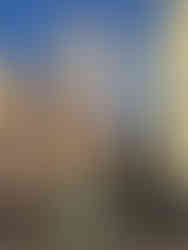















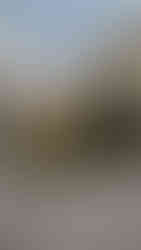











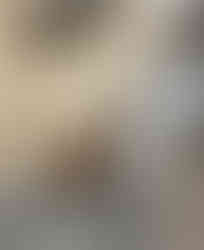

























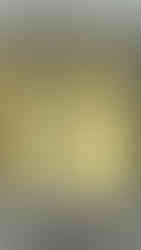



















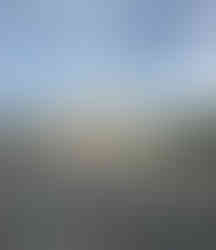



















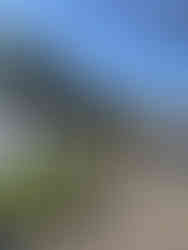














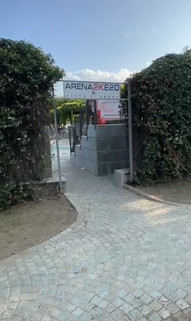









Comments